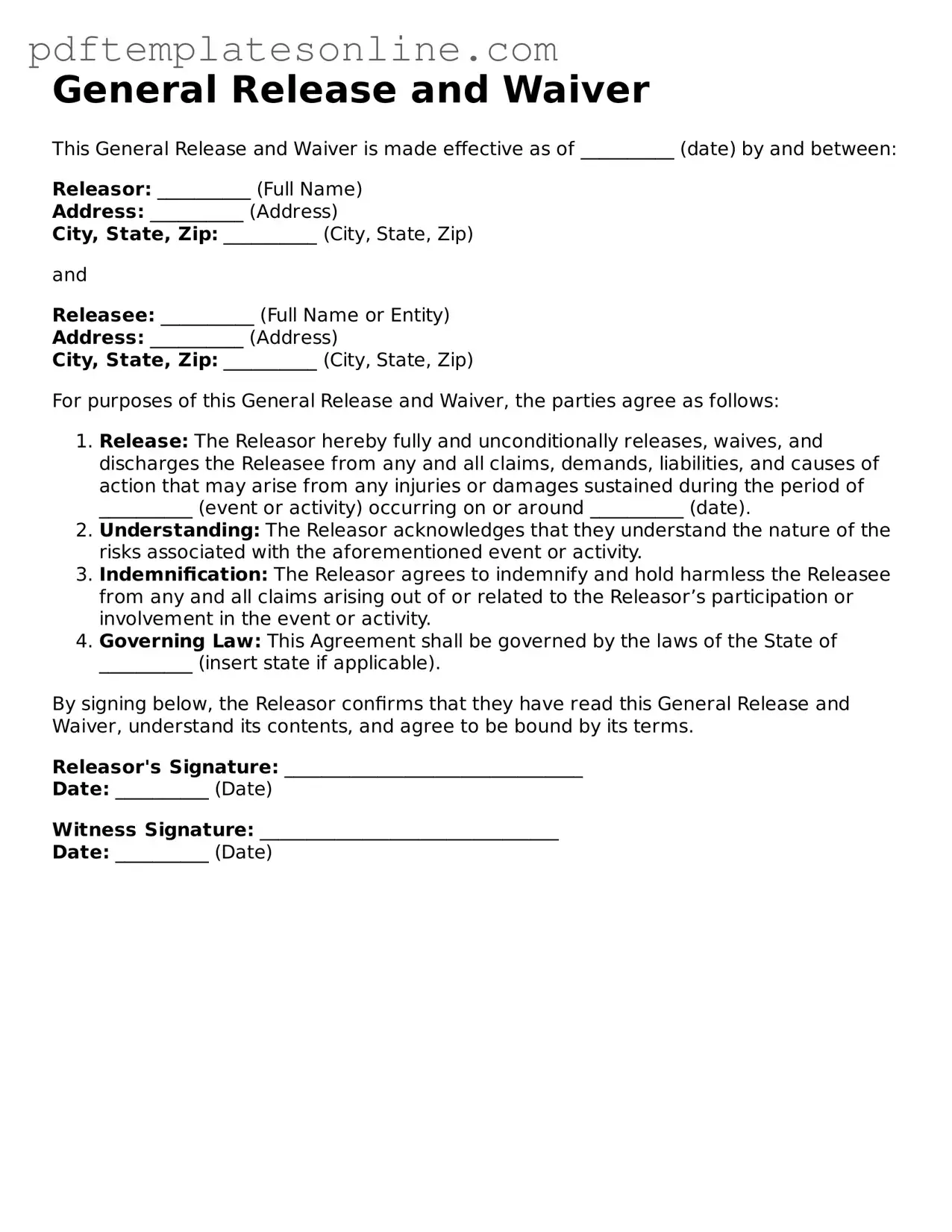Fillable General Release and Waiver Document
The General Release and Waiver form is a legal document that individuals use to relinquish their rights to pursue claims against another party. This form is often utilized in various contexts, such as settling disputes or concluding agreements, ensuring that all parties involved understand the implications of their decision. By signing this document, individuals acknowledge that they are giving up certain legal rights in exchange for a benefit or resolution.
Access General Release and Waiver Editor Now
